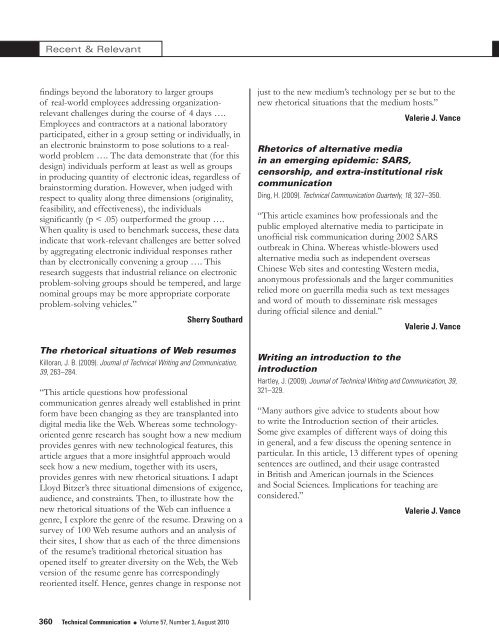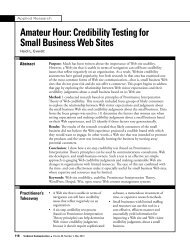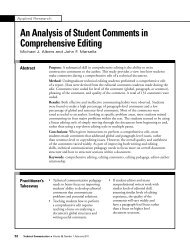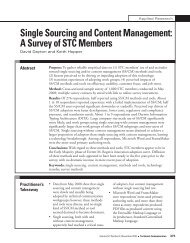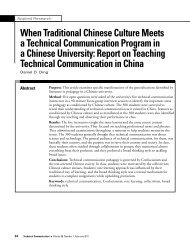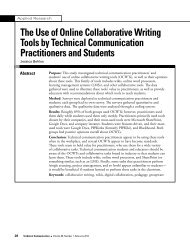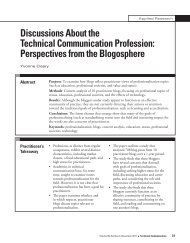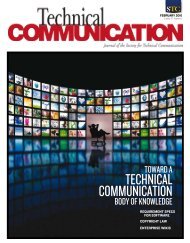Recent & Relevantfindings beyond the laboratory to larger groupsof real-world employees addressing organizationrelevantchallenges during the course of 4 days ….Employees and contractors at a national laboratoryparticipated, either in a group setting or individually, inan electronic brainstorm to pose solutions to a realworldproblem …. The data demonstrate that (for thisdesign) individuals perform at least as well as groupsin producing quantity of electronic ideas, regardless ofbrainstorming duration. However, when judged withrespect to quality along three dimensions (originality,feasibility, and effectiveness), the individualssignificantly (p < .05) outperformed the group ….When quality is used to benchmark success, these dataindicate that work-relevant challenges are better solvedby aggregating electronic individual responses ratherthan by electronically convening a group …. Thisresearch suggests that industrial reliance on electronicproblem-solving groups should be tempered, and largenominal groups may be more appropriate corporateproblem-solving vehicles.”Sherry Southardjust to the new medium’s technology per se but to thenew rhetorical situations that the medium hosts.”Valerie J. VanceRhetorics of alternative mediain an emerging epidemic: SARS,censorship, and extra-institutional riskcommunicationDing, H. (2009). Technical Communication Quarterly, 18, 327–350.“This article examines how professionals and thepublic employed alternative media to participate inunofficial risk communication during 2002 SARSoutbreak in China. Whereas whistle-blowers usedalternative media such as independent overseasChinese Web sites and contesting Western media,anonymous professionals and the larger communitiesrelied more on guerrilla media such as text messagesand word of mouth to disseminate risk messagesduring official silence and denial.”Valerie J. VanceThe rhetorical situations of Web resumesKilloran, J. B. (2009). Journal of Technical Writing and Communication,39, 263–284.“This article questions how professionalcommunication genres already well established in printform have been changing as they are transplanted intodigital media like the Web. Whereas some technologyorientedgenre research has sought how a new mediumprovides genres with new technological features, thisarticle argues that a more insightful approach wouldseek how a new medium, together with its users,provides genres with new rhetorical situations. I adaptLloyd Bitzer’s three situational dimensions of exigence,audience, and constraints. Then, to illustrate how thenew rhetorical situations of the Web can influence agenre, I explore the genre of the resume. Drawing on asurvey of 100 Web resume authors and an analysis oftheir sites, I show that as each of the three dimensionsof the resume’s traditional rhetorical situation hasopened itself to greater diversity on the Web, the Webversion of the resume genre has correspondinglyreoriented itself. Hence, genres change in response notWriting an introduction to theintroductionHartley, J. (2009). Journal of Technical Writing and Communication, 39,321–329.“Many authors give advice to students about howto write the Introduction section of their articles.Some give examples of different ways of doing thisin general, and a few discuss the opening sentence inparticular. In this article, 13 different types of openingsentences are outlined, and their usage contrastedin British and American journals in the Sciencesand Social Sciences. Implications for teaching areconsidered.”Valerie J. Vance360 Technical Communication l Volume 57, Number 3, August 2010
Recent & RelevantRecent & RelevantComputer IssuesAnalysis of alternative keyboards usinglearning curvesAnderson, A. M., Mirka, G. A., Joines, S. M. B., & Kaber, D. B. (2009).Human Factors, 51, 35–45.“To quantify learning percentages for alternativekeyboards (chord, contoured split, Dvorak, and splitfixed angle) and understand how physical, cognitive,and perceptual demand affect learning …. Alternativekeyboards have been shown to offer ergonomicbenefits over the conventional, single-plane QWERTYkeyboard design, but productivity-related challengesmay hinder their widespread acceptance …. Sixteenparticipants repeatedly typed a standard text passageusing each alternative keyboard. Completion timeswere collected and subsequent learning percentageswere calculated. Participants were asked to subjectivelyrate the physical, cognitive, and perceptual demandsof each keyboard, and these values were then relatedto the calculated learning percentages …. Learningpercentage calculations revealed the percentage for thesplit fixed-angle keyboard (90.4%) to be significantlydifferent (p < .05) from the learning percentages forthe other three keyboards (chord, 77.3%; contoursplit, 76.9%; Dvorak, 79.1%). The average taskcompletion time for the conventional QWERTYkeyboard was 40 s, and the average times for thefifth trial on the chord, contoured split, Dvorak, andsplit fixed-angle keyboards were 346, 69, 181, and42 s, respectively …. Productivity decrements can bequickly regained for the split fixed-angle and contoursplit keyboard but will take considerably longer forDvorak and chord keyboards. The split fixed-anglekeyboard involved physical learning, whereas theothers involved some combination of physical andcognitive learning, a result supported by the subjectiveresponses …. Understanding the changes in taskperformance time that come with learning can provideadditional information for a cost-benefit analysiswhen considering the implementation of ergonomicinterventions.Delays and user performance in humancomputer-networkinteraction tasksCaldwell, B. S., & Wang, E. (2009). Human Factors, 51, 813–830.“This article describes a series of studies conductedto examine factors affecting user perceptions,responses, and tolerance for network-based computerdelays affecting distributed human-computernetworkinteraction (HCNI) tasks …. HCNI tasks,even with increasing computing and networkbandwidth capabilities, are still affected by humanperceptions of delay and appropriate waiting timesfor information flow latencies …. Conducted were6 laboratory studies with university participants inChina (Preliminary Experiments 1 through 3) andthe United States (Experiments 4 through 6) toexamine users’ perceptions of elapsed time, effectof perceived network task performance partners ondelay tolerance, and expectations of appropriate delaysbased on task, situation, and network conditions ….Results across the six experiments indicate that users’delay tolerance and estimated delay were affected bymultiple task and expectation factors, including taskcomplexity and importance, situation urgency andtime availability, file size, and network bandwidthcapacity. Results also suggest a range of user strategiesfor incorporating delay tolerance in task planning andperformance …. HCNI user experience is influencedby combinations of task requirements, constraints,and understandings of system performance; toleranceis a non-linear function of time constraint ratios ordecay …. Appropriate user interface tools providingdelay feedback information can help modify userexpectations and delay tolerance. These tools areespecially valuable when delay conditions exceed afew seconds or when task constraints and systemdemands are high. Interface designs for HCNI tasksshould consider assistant-style presentations ofdelay feedback, information freshness, and networkcharacteristics. Assistants should also gather awarenessof user time constraints.”Sherry SouthardSherry SouthardVolume 57, Number 3, August 2010 l Technical Communication 361
- Page 1 and 2:
AUGUST 2010Volume 57 Number 3SPECIA
- Page 3 and 4:
PresidentMichael A. HughesVice Pres
- Page 5 and 6:
VoLuME 57, NuMBER 3AUGUST 2010ISSN
- Page 7 and 8:
Guest EditorialKirk St.Amant and Ma
- Page 9 and 10:
Applied ResearchTechnical Communica
- Page 11 and 12:
Applied ResearchNicole St. Germaine
- Page 13 and 14:
Applied ResearchNicole St. Germaine
- Page 15 and 16:
Applied ResearchNicole St. Germaine
- Page 17 and 18:
Applied ResearchNicole St. Germaine
- Page 19 and 20:
Applied ResearchNicole St. Germaine
- Page 21 and 22:
Applied ResearchNicole St. Germaine
- Page 23 and 24:
Applied ResearchNicole St. Germaine
- Page 25 and 26:
Applied TheoryTatiana BatovaIntrodu
- Page 27 and 28:
Applied TheoryTatiana BatovaMoreno,
- Page 29 and 30:
Applied TheoryTatiana BatovaThe Uni
- Page 31 and 32:
Applied TheoryTatiana Batovadoctors
- Page 33 and 34:
Applied TheoryTatiana BatovaTo addr
- Page 35 and 36:
Applied TheoryTatiana Batovathe loc
- Page 37 and 38:
Applied TheoryTatiana BatovaJohnson
- Page 39 and 40:
Applied TheoryTatiana BatovaInterna
- Page 41 and 42:
Applied TheoryMcKee and PorterIntro
- Page 43 and 44:
Applied TheoryMcKee and PorterFor e
- Page 45 and 46:
Applied TheoryMcKee and Porterpubli
- Page 47 and 48:
Applied TheoryMcKee and PorterBecau
- Page 49 and 50:
Applied TheoryMcKee and Porterof th
- Page 51 and 52:
Applied TheoryMcKee and Porterwith
- Page 53 and 54:
Applied TheoryMcKee and PorterA Cop
- Page 55 and 56:
Applied TheoryMcKee and PorterConte
- Page 57 and 58:
Applied TheoryMcKee and PorterWalto
- Page 59 and 60:
Applied ResearchLiza PottsIntroduct
- Page 61 and 62:
Applied ResearchLiza Pottsdoes not
- Page 63 and 64:
Applied ResearchLiza PottsUser’s
- Page 65 and 66:
Applied ResearchLiza Pottsactors, t
- Page 67 and 68: Applied ResearchLiza PottsDRM has a
- Page 69 and 70: Applied ResearchLiza Pottsmake bett
- Page 71 and 72: Applied ResearchLiza PottsOne viewe
- Page 73 and 74: Applied ResearchLiza Pottsinvolved
- Page 75 and 76: Applied ResearchLiza PottsHayhoe, G
- Page 77 and 78: Applied ResearchInternational Fair
- Page 79 and 80: Applied ResearchTyAnna K. Herringto
- Page 81 and 82: Applied ResearchTyAnna K. Herringto
- Page 83 and 84: Applied ResearchTyAnna K. Herringto
- Page 85 and 86: Applied ResearchTyAnna K. Herringto
- Page 87 and 88: Applied ResearchTyAnna K. Herringto
- Page 89 and 90: Book ReviewsWriting Successful Scie
- Page 91 and 92: Book ReviewsThe Process: Business P
- Page 93 and 94: Book ReviewsHCI Beyond the GUI: Des
- Page 95 and 96: Book ReviewsOrigins of the Specious
- Page 97 and 98: Book Reviewsgenre, and process, top
- Page 99 and 100: Book ReviewsPart One goes from the
- Page 101 and 102: Book Reviewsrather than writers, an
- Page 103 and 104: Book ReviewsHow to Write Fast Under
- Page 105 and 106: Book Reviewsmanagement system (CMS)
- Page 107 and 108: Book Reviewsnearly strangled when h
- Page 109 and 110: Book Reviewsinteractive TV model)
- Page 111 and 112: Book ReviewsOtherwise, Beech shows
- Page 113 and 114: Book Reviewssuch as blog, I found m
- Page 115 and 116: Book Reviewsemployees and effective
- Page 117: Recent & RelevantSherry Southard, E
- Page 121 and 122: Recent & RelevantRecent & RelevantE
- Page 123 and 124: Recent & Relevantworking in a langu
- Page 125 and 126: Recent & RelevantWhat’s the big d
- Page 127 and 128: Recent & RelevantScientific Writing
- Page 129 and 130: Recent & Relevantapplicability. Man
- Page 131: Did You Missthe Summit?Don’t miss


